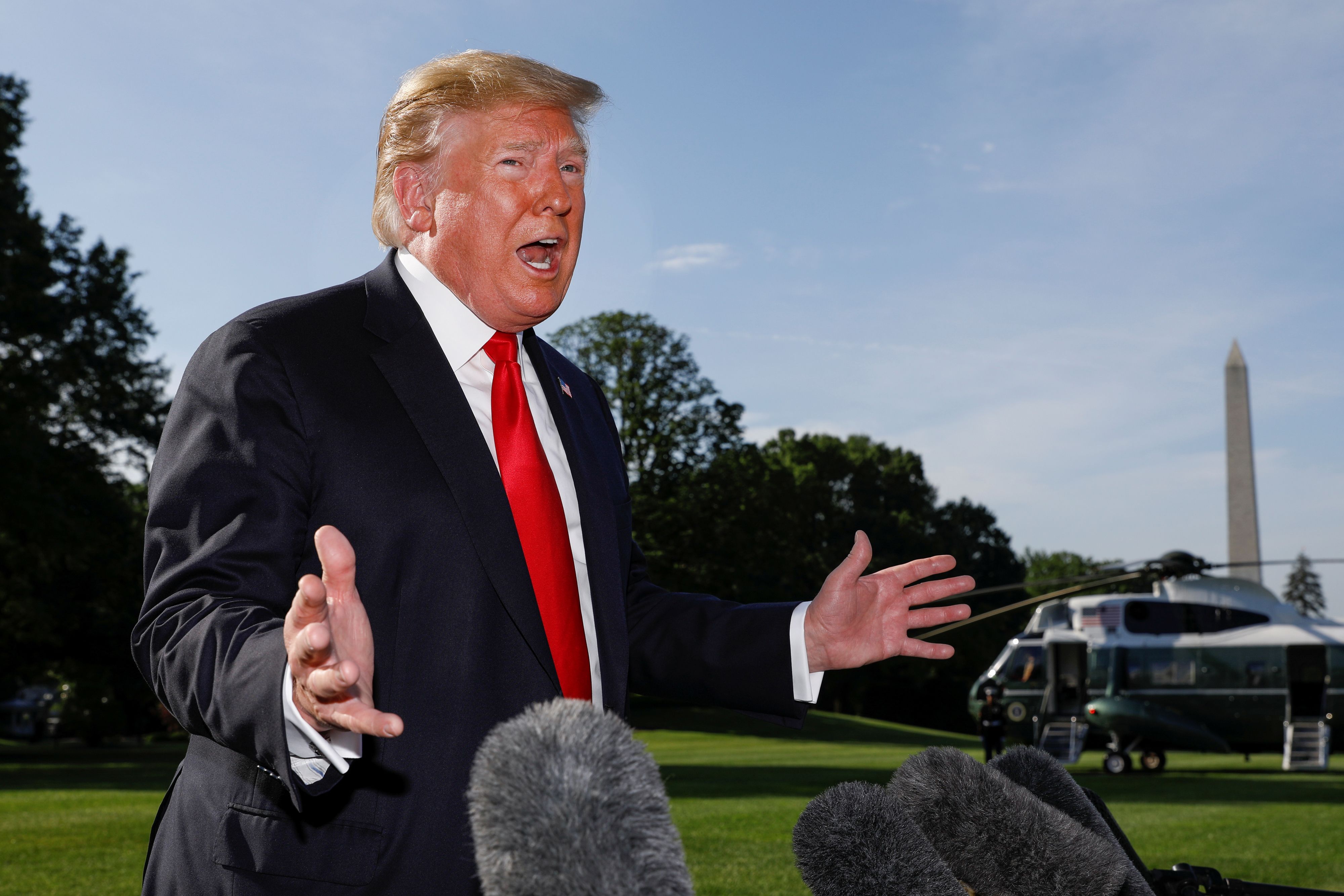
President Donald Trump speaks to reporters upon departure from the White House in Washington, May 30, 2019.
Kevin Lamarque | Reuters
Tariffs that the U.S. is threatening to impose against Mexican goods could have steep costs, both economically and politically, while also impacting important policy decisions.
President Donald Trump said the duties will be imposed June 10 unless Mexico takes steps to address illegal immigration. While White House Chief of Staff Mick Mulvaney said the hope is that the tariffs aren’t necessary, the president has shown that his threats are not idle.
Under the plan Trump outlined, the tariffs would begin at 5%, levied the first day of each month until they reach a maximum of 25%.
Based on 2018 trade numbers, in which the U.S. imported $371.9 billion from Mexico, that would equate to a tax on U.S. consumers that would start at $18.6 billion and escalate to just shy of $93 billion.
Should Mexico choose to retaliate with a similar 5% rate, the initial costs to its consumers would be about $15 billion in U.S. dollars, graduating to $74.8 billion assuming the duties follow the same path as what the White House has threatened to impose. Those figures are based on the $299.1 billion worth of U.S. goods that Mexico imported last year, a figure that represents 47% of Mexico’s total.
Total costs are even more
Those figures, while a baseline from which to measure, don’t take into account all the impact.
That’s because in the critical auto industry, many parts crisscross borders multiple times, making the impact even more substantial.
“Production processes would have to be changed in substantial ways to reduce the impact of the tariffs, reducing productivity in a significant way,” said Carlos Capistran, Canada and Mexico economist at Bank of America Merrill Lynch. “This could eventually lead many firms that currently produce in Mexico to relocate to the U.S., significantly impacting growth in Mexico.”
Indeed, vehicles are the top U.S. imports from Mexico, worth $93 billion last year. They are followed by electrical machinery ($64 billion), machinery ($63 billion), mineral fuels ($16 billion) and medical instruments ($15 billion), according to U.S. Trade Representative office figures. On the export side, machinery was tops at $46 billion, followed by electrical machinery ($43 billion) mineral fuels ($34 billion), vehicles ($22 billion) and plastics ($18 billion).
“In Mexico, higher US tariffs would lower growth and cause a depreciation of the peso. The latter would happen in part to absorb the impact of the tariffs. It would also increase prices, especially if Mexico decides to retaliate,” Capistran said in a note.
Market value drops as trade worries rise
The costs extend beyond the tariffs as well.
Wall Street has suffered during the global tariff dispute, with stocks dropping more than 1% in Friday trading as investors worry over the longer-term impact of the trade impasse.
“These tariffs that would only ramp up would be a total mess,” said Peter Boockvar, chief investment officer at Bleakley Advisory Group. “In the meantime, business has another reason to sit on their hands before making any major decisions.”
Taken together, the situation could have an impact on the Federal Reserve.
Central bank officials have said repeatedly that they are comfortable with current policy and have no plans to make changes at least through 2019. However, Vice Chairman Richard Clarida in a speech Thursday outlined the conditions under which the Fed would consider cutting rates, specifically citing “global economic and financial developments” as a key consideration.
Markets are pricing in rate cuts in September and December.
“This endemic instability and uncertainty creates a very difficult dilemma for the Fed and other global central banks,” Krishna Guha, head of global policy and central bank strategy at Evercore ISI, said in a note.
Clarida’s remark, Guha said, come in an environment where “it appears increasingly likely that the trajectory for trade will be one in which these downside risks will mount. This underpins our assessment that the case for insurance cuts is strengthening,” he said.
“The impetus to delay investment decisions would likely imply a lower short-run neutral interest rate. Put differently, it is hard to argue that the rate path that was appropriate in April would remain appropriate in the face of further trade-led increases in uncertainty as well as downside risk,” Guha added.
Markets have not been assuaged by economic data that has remained on balance positive as worries mount over how far Trump will go.
Deutsche Bank estimates that the trade war has pulled $5 trillion out of the stock market.
“”The latest tariff threat with Mexico was quite unexpected, as we’ve been hearing how well discussions have been going with both Canada and Mexico. This is just the latest worry to put on the fire for investors,” Ryan Detrick, senior market strategist for LPL Financial, said in a statement. “The big question at the end of the day though is can we really fight two trade wars at the same time?”

